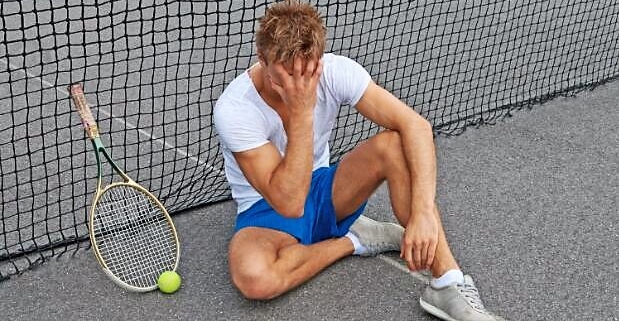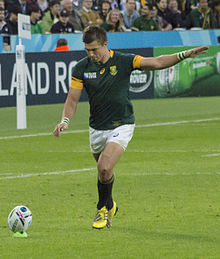Building Confidence in Youth Athletes
Building self-efficacy in youth athletes
A couple of distinctions I have found between mental toughness, confidence, and self-efficacy:
Mental toughness vs self-efficacy?
Firstly, I hesitate to use the words ‘mental toughness’ as sometimes, this may be used as an excuse to force young athletes to work excruciatingly hard, all the time (I am not anti-hard work, but getting the balance between pushing and pulling back right is essential for long-term athlete development). As the rugby strength coach, Kier Wenham Flatt puts it:
“What we think of as mental toughness is probably actually comprised of several different abilities like task focus, discipline, concentration, durability, aggression and emotional control”.
Which will mean we have to figure out what our individual is missing and train this quality.
Now, to get us back on track.
Confidence vs self –efficacy?
I wanted to use this term, rather than the word ‘confidence’, personally I think self-efficacy provides a better description than confidence; in describing somebodies belief in their own capabilities, to complete a specific task.
I quite like this differentiation;
“Confidence is a nondescript term that refers to strength of belief but does not necessarily specify what the certainty is about… Perceived self-efficacy refers to belief in one’s agentive capabilities that one can produce given levels of attainment” (Bandura, 1997).
So here are some of the things I focus on, when building self-efficacy in this special population
Understanding individual differences and specificity
Youngsters who have higher levels of self-efficacy in one task may not display this, in another. How many times do we see children perform tasks autonomously whilst crumbling in a different task, especially after injury? James Smith in his book ‘Governing Dynamics of Coaching’ suggests that mental toughness is task specific, I believe this can apply to self-efficacy. Whilst a very complex issue, it may force a coach to do a bit of digging to identify potential route causes for low levels of self-efficacy and create an intervention. Alternatively, booking a few sessions with a sports psychologist may be warranted.
Process vs outcome
Secondly, I place having a process based rather over an outcome based system – kids love winning (I personally think this is a good thing) life is competitive, I am not a coach who will dampen a healthy competitive edge. However, teaching youth to ‘love the process’, that ‘winning is not everything ‘will make sure they do not miss the forest for the trees. Especially in a world glorifying overnight successes. Additionally, success does not come overnight (unless you are on X-factor!!). How many times do grandparents say “nothing great, comes easy.” If we are not teaching our kids to love the training process, then we are missing a vital part in their development.
As Daz Drake states:
Goal Setting
Looking further into processes, I want to talk about goal setting. What is your ‘why?’ what makes you get out of bed, to train? When talking to my young athletes about goal setting I like them to give me specific, clear goals; getting stronger/fitter isn’t a detailed goal. Sometimes this leads to a few blank faces and an answer may not be immediate. However, once these goals have been set, remind them to keep them in a safe place, where they can look at them every day. Sometimes we all need that boost, when we don’t feel like training.
“You have to work hard to get your thinking clear to make it simple”- Steve Jobs
This quote has always has always stuck with me. I think this can apply to setting a clear direction you want to sail your ship. Set clear, purposeful goals.
Whilst we are on the topic of clear, specific goals. I also think of giving, clear specific feedback. How we critique/give feedback is important, why was something good or needs improving? For example, ‘that was a great squat well done!’ I can be guilty of this. On reflection, I am not sure what this actually means to the individual. Whilst not all feedback needs an essay, I also believe in telling the child what they did specifically that was notable.
Using Guided Discovery to build self-efficacy
Offer the task not the solution – I want to move on to learning through Game play, conditioning games to drive certain adaptations, such as skill acquisition, movement exploration or fitness. Allowing the athletes to solve problems and enhance decision-making capabilities, in my opinion, develops self-efficacy through adaptability. As with everything, balance is key, therefore I am also a believer in good old fashioned set drills for learning. Nevertheless game play, allows young athletes a chance to express creativity, accountability, resilience, and teamwork. All these things fundamental to athletic performance. When they are out there on the court or field, in the midst of chaos, they only have themselves to rely on. Sometimes that little bit of creativity and resilience, in the last 2 minutes, may make all the difference!
Want A FREE Fun Games For Kids? Click Here
Perception around setbacks and failures
Changing perception around setbacks and failures. The aforementioned paragraph, links nicely with this. In the book ‘Black Box Thinking’ a sentence stood out to me. I want to share this with you.
“Dyson was not the first to come up with the idea of a cyclone vacuum cleaner, he was not even the second, or the third. But he was only one with the stamina to ‘fail’ his concept into a workable solution.”
I think this is primary for long term athletic development. It’s important to know how losses and volatility feel so that we can use the right methods; recognition of these feelings, create an intervention, and fuel future successes. Failure is part of the process and it may happen often.
Habits
Another significant factor in building self-efficacy I want to allude to is habit forming. I always try to remind my youngsters of the importance of good habits whether these are as simple as putting their weights away to pre-tournament routines, in the book the ‘Power of Habit’ the author suggests that ‘small habits people introduce into their routine unintentionally carry over into other aspects of their lives.’ in the area of sports performance this series of autonomous behaviours enables players to act in the moment, reduce distraction and perform at their best during competitions.
Performance
Lastly, although this may seem obvious, is bettering the performance of the young athlete. Equipping them with the knowledge that they can handle the task ahead goes a long way in developing self- efficacy; especially in contact sports where knowledge of their own ‘super strengths’ and previous victories will increase their belief in their ability to dominate a collision!
Today’s blog isn’t scientific, perhaps a little anecdotal, compared to the others but I hope it can create some discussion around this central area of Long term athletic development.
Thanks for reading!
Konrad McKenzie
Strength and Conditioning coach.
@konrad_mcken
References:
- Bandura, A. (1997). Self-efficacy: The exercise of control. New York: W.H. Freeman.
- If you’re not subscribed yet, click here to get free email updates, so we can stay in touch.
- Share this post using the buttons on the top and bottom of the post. As one of this blog’s first readers, I’m not just hoping you’ll tell your friends about it. I’m counting on it.
- Leave a comment, telling me where you’re struggling and how I can help
Since you’re here…
…we have a small favor to ask. APA aim to bring you compelling content from the world of sports science and coaching. We are devoted to making athletes fitter, faster and stronger so they can excel in sport. Please take a moment to share the articles on social media, engage the authors with questions and comments below, and link to articles when appropriate if you have a blog or participate on forums of related topics. — APA TEAM








